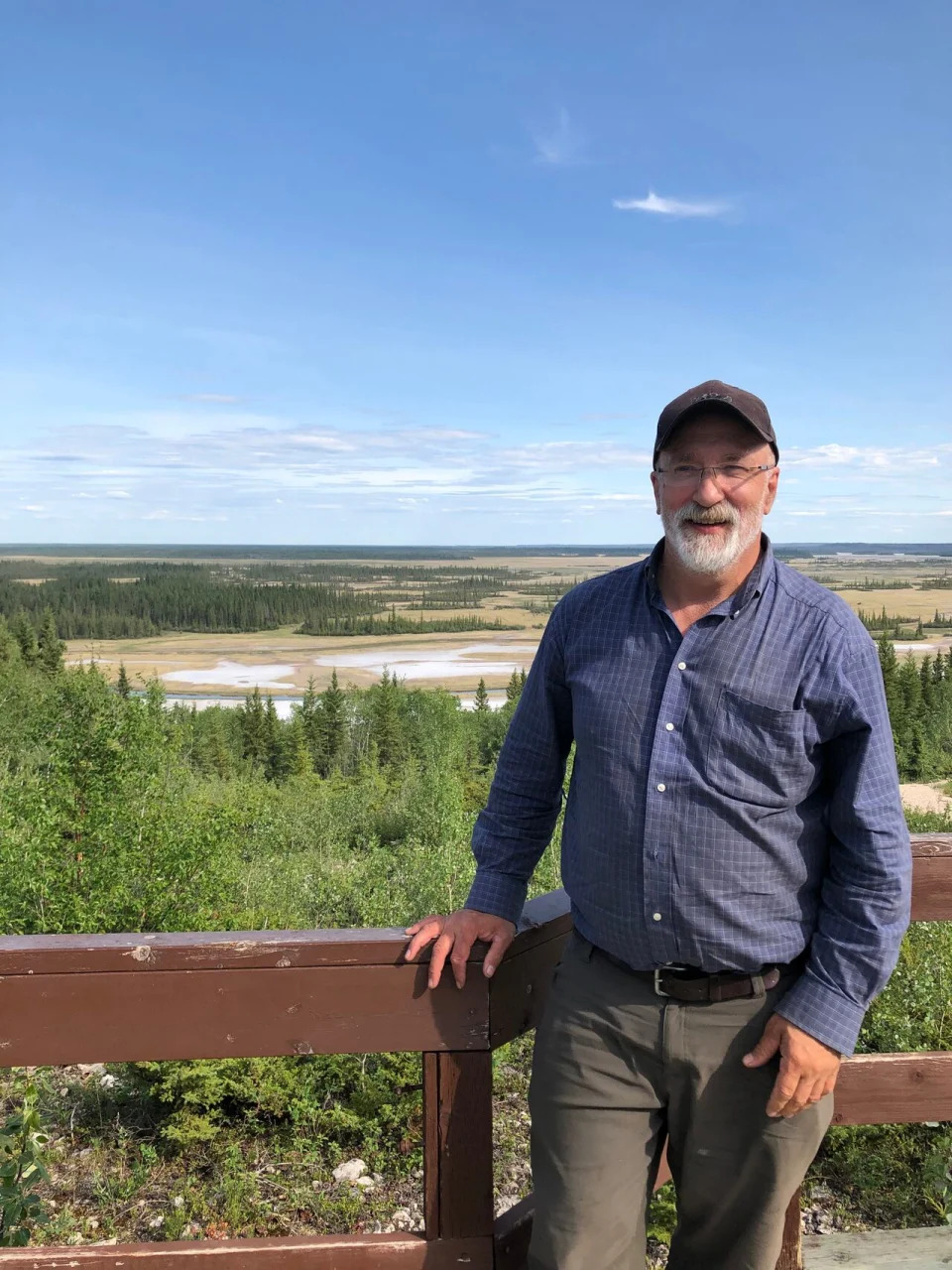
Posted on June 3, 2024
The N.W.T. government is proposing to dredge part of the Liard River near Fort Simpson to ensure the local ferry — a seasonal lifeline to the community and others in the area — can continue to safely operate despite this year’s extreme low water.
The Department of Infrastructure has applied to the Mackenzie Valley Land and Water Board for a licence to allow the dredging. The plan is to remove 8,000 cubic metres of sediment and obstructions, to clear a safe path for the ferry. The work is expected to occur between August 15 and September 18.
Fort Simpson Mayor Sean Whelly said it’s important to address the issue before something goes wrong and the ferry service is disrupted.
“It’s really our only connection. The air flights out of here are quite expensive, so people tend not to use that,” Whelly said. “Everything that we get in Fort Simpson comes by way of the ferry. And so it’s sort of critical for us.”
The ferry crossing opened for the season earlier this month, when it was already clear that the Liard, along with the Mackenzie River, was much lower than usual.
Whelly emphasized that starting the season with lower water levels could lead to an earlier shutdown of the ferry.
The M.V. Lafferty ferry in Fort Simpson, N.W.T. launching into the Liard River earlier this month. (Jonathan Antoine)
“Normally, we wouldn’t be seeing these big deposits of sand until well into late August,” he said. “If it were to start giving us problems [earlier in the season], that would cut our whole service period down considerably,” he said.

The M.V. Lafferty in Fort Simpson, N.W.T. launching into the Liard River. Fort Simpson’s mayor is concerned that low water levels could lead to the ferry closing at points during the summer.
The proposed dredging work aims to remove boulders that accumulate near the docking area, which can interfere with the ferry’s operations.
But Whelly wonders whether that will be enough.
“They will be digging out those rocks. It’s not going to solve the problem of low water across the whole river,” he said.
Looking at long-term solutions, Whelly and other community members are advocating for the construction of a bridge over the Liard River.
“Most people in the community are fully supportive of a bridge,” he said. “The Sahtu badly needs the highway. We need the connection all the way up to Inuvik if we’re ever going to have tourism seriously looked at here.”

Fort Simpson Mayor Sean Whelly calls the incident rare, and thinks it was an accident.
Fort Simpson Mayor Sean Whelly said the community needs a bridge across the Liard River. (Submitted by Sean Whelly)
Whelly said the potential for wildfires adds another layer of risk, saying that evacuating the community by ferry would create a bottleneck situation and hinder those efforts.
“If there’s any issues with that, we’re stuck here. And we’ll just have to do the best we can in the event of a wildfire,” he said. “Climate change is not going to get better.”
‘We have to ensure protection for our people,’ chief says
Łı́ı́dlı̨ı̨ Kų́ę́ First Nation (LKFN) Chief Kele Antoine is also concerned about the ongoing low water levels affecting ferry operations and the potential impacts on the community. He said this is the lowest he’s ever seen the water.
Antoine said the ferry serves as a critical link for supplies and transportation, and the low water levels pose significant challenges.
“Right when the ferry started [this season], they went right to the low-water route,” he said. “Which is a different route, they have a little deeper channel, so they gotta go up the river. Takes a little bit longer, probably more fuel more costs.”
Antoine also emphasized the importance of balancing environmental concerns — such as the effects dredging might have on aquatic life — with community needs.

Kele Antoine is the chief of Łı́ı́dlı̨ı̨ Kų́ę́ First Nation, he’s frustrated with how slow the process has been trying to open the women’s shelter.
Kele Antoine, chief of Łı́ı́dlı̨ı̨ Kų́ę́ First Nation, said the ferry serves as a critical link for supplies and transportation, and the low water levels pose significant challenges. (Submitted by Kele Antoine)
“We have to ensure protection for our people here in our community,” he said. “But also the outlying communities that we service here.”
Fort Simpson acts as a hub for surrounding communities such as Trout Lake, Jean Marie River, and Wrigley. Residents of those communities rely on Fort Simpson and its ferry for essential supplies, including groceries and medical services.
“It’s in our best interest to really work with the proponent and try to come up with a quick solution, collectively,” he said. “And taking into consideration all those important environmental concerns.”
Antoine also stressed the importance of community involvement in the dredging project.
“We want to be an active participant,” he said. “Our economic arm, Nogha Enterprises, is strategically situated to take on this type of work.
“We want to put our people to work here in the community … having a little boost to our small local economy,”
Recent rains have slightly improved water levels in the area. However, Antoine is concerned about the long-term implications of climate change on the river and how it affects the land users.
“It’s a big concern for a lot of our harvesters that utilize the river. There’s rocks popping out that we’ve never seen before,” he said. “That poses a big safety concern.
“We’re just so programmed to taking certain routes. Especially late at night, you want to get home — and now there could be just a rock, a big rock sticking up in the middle of the river.”
Antoine stressed that people using the river need to be extra careful and to think outside of the box when adapting to the effects of climate change.





